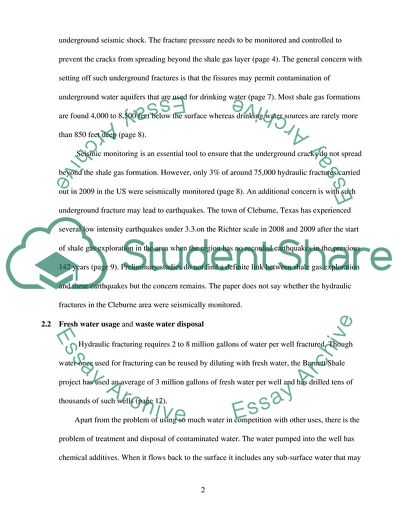Cite this document
(Addressing the Environmental Risks From Shale Gas Development Article Example | Topics and Well Written Essays - 1500 words - 1, n.d.)
Addressing the Environmental Risks From Shale Gas Development Article Example | Topics and Well Written Essays - 1500 words - 1. https://studentshare.org/environmental-studies/1797435-environmental-issues-article-critque
Addressing the Environmental Risks From Shale Gas Development Article Example | Topics and Well Written Essays - 1500 words - 1. https://studentshare.org/environmental-studies/1797435-environmental-issues-article-critque
(Addressing the Environmental Risks From Shale Gas Development Article Example | Topics and Well Written Essays - 1500 Words - 1)
Addressing the Environmental Risks From Shale Gas Development Article Example | Topics and Well Written Essays - 1500 Words - 1. https://studentshare.org/environmental-studies/1797435-environmental-issues-article-critque.
Addressing the Environmental Risks From Shale Gas Development Article Example | Topics and Well Written Essays - 1500 Words - 1. https://studentshare.org/environmental-studies/1797435-environmental-issues-article-critque.
“Addressing the Environmental Risks From Shale Gas Development Article Example | Topics and Well Written Essays - 1500 Words - 1”. https://studentshare.org/environmental-studies/1797435-environmental-issues-article-critque.


